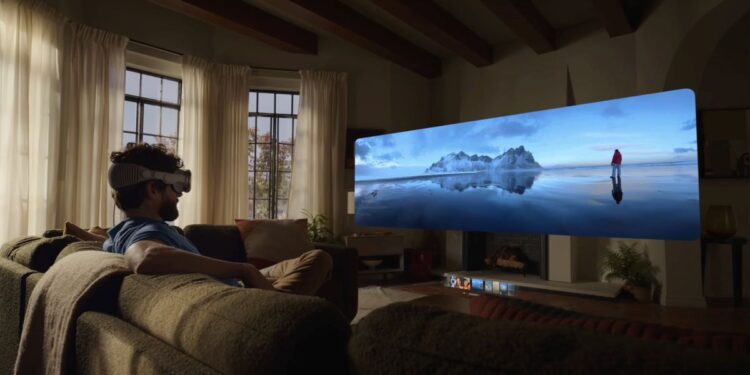Apple Vision Pro was unveiled in June of 2023, and since its unveiling, it has raised high expectations. On February 2, the headset is finally available for purchase in the United States. But how do they work?
Apple Vision Pro can be considered the first example of spatial computing, i.e. a computer that does not use a screen, but works in space. The entire computing experience has been developed to integrate what used to be the classic program windows, within a real space, without interruptions. When a user uses Vision Pro, the device, through 12 cameras and several sensors, processes the images of the surrounding reality and returns them using two screens placed near the eyes, superimposing virtual objects on them. Thanks to the VisionOS operating system, the graphics are projected into real space as if they were solid objects. Apple Vision Pro, therefore, can be used to carry out the usual tasks that everyone carries out with their smartphone, tablet, or computer without having to submit to the size of the screen. The headset also allows you to play the more than two million apps available for iOS and iPadOS, as well as mirror your Mac’s screen. VisionOS’s extended reality allows developers to build much more immersive digital experiences. Apple also unveiled a new video format specifically for the Vision Pro, called Apple Immersive Video, capable of transporting the wearer to a place, or a story, through 180-degree three-dimensional recordings. Vision Pro’s augmented reality also promises to revolutionize home behavior. The Crouton app, developed by Devin Davies, can provide assistance to those who wear the headset while cooking, as they are able to recognize the ingredients, to view the steps of a recipe. The headset costs $3,499. Early adopters have already been spotted and filmed, users using the headsets while walking, or on the bus, or while driving.
Written by Sara Pia Votta

































